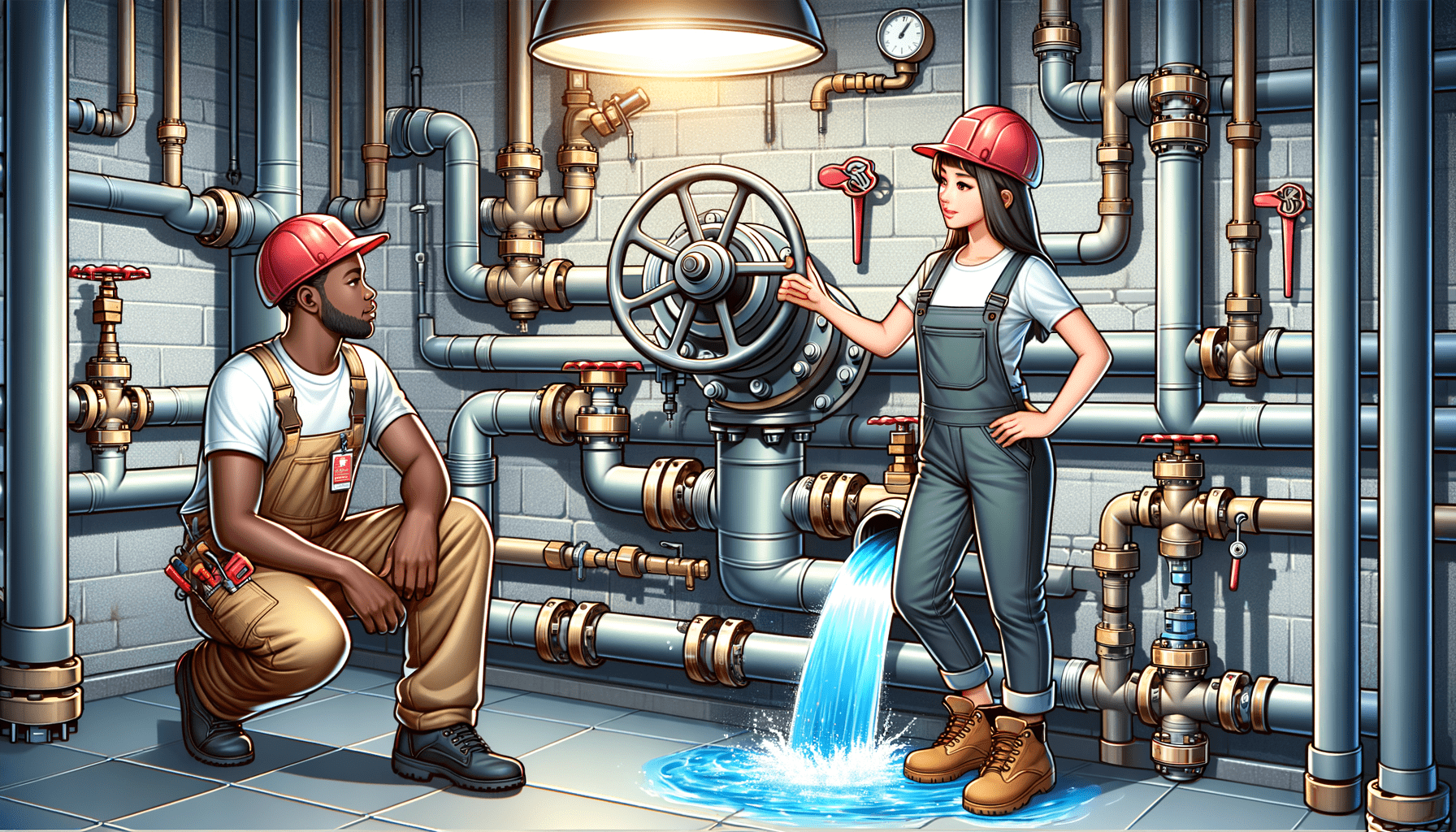Ever experienced that heart-dropping moment when water starts gushingly around your home – uninvited and uncontrolled? Well, you’re not alone! Surveys by the Water Regulation Advisory Scheme found that one-third of homeowners didn’t know where the main water shut-off valve was. In such a panic situation, knowing how to shut off the main water supply could make the difference between a manageable mess and costly damage!
Contents
- Finding Your Home’s Water Valve
- Identifying the Main Water Valve
- Turning Off the Main Water Circuit
- Locate and Operate the Water Valve
- Distinguishing Types of Shutoff Valves
- Procedure to Shut Main Water
- Shutting off Water at Fixtures
- Halting Water Supply via Meter
- Guide to Shutoff Valves
- Shutting Down Water Heater Supply
- Tying it all together
Finding Your Home’s Water Valve
The first step towards effectively managing any potential water crisis in your home is finding your home’s water valve. Interestingly, about 85% of U.S. homes (and a similar percentage in Australia) have individually operated shut off valves. The location of this valve largely depends on the climate in your locality. In houses located in colder climates, like those in southern Australia, you’ll find the valve in indoor spaces such as basements or garages, to protect it from freezing conditions.
For those residing in warm climates similar to parts of Western Australia, the valve is often located outside the house, frequently close to an outdoor tap. A practical tip is to look for a round wheel or lever on a pipe coming into your house since in most cases, that is where you’d locate your home’s water valve.
Identifying the Main Water Valve
Now that you know where to find your home’s water valve, how do you ensure that it is indeed the Main Water Valve? Most residences have multiple water valves, but only one main valve that controls the whole water supply. Usually, it’s located near where the water line enters your house. This can be a wall inside or outside, often in the basement or on an external wall closest to your front yard.
Certain key features make it easier to identify the main water valve: this is typically larger than other valves and may be close to your water meter. Also, as per the Plumbing Association Australia’s technical notes, the Main Water Valve must be installed in an easily accessible area following specific design requirements.
Turning Off the Main Water Circuit
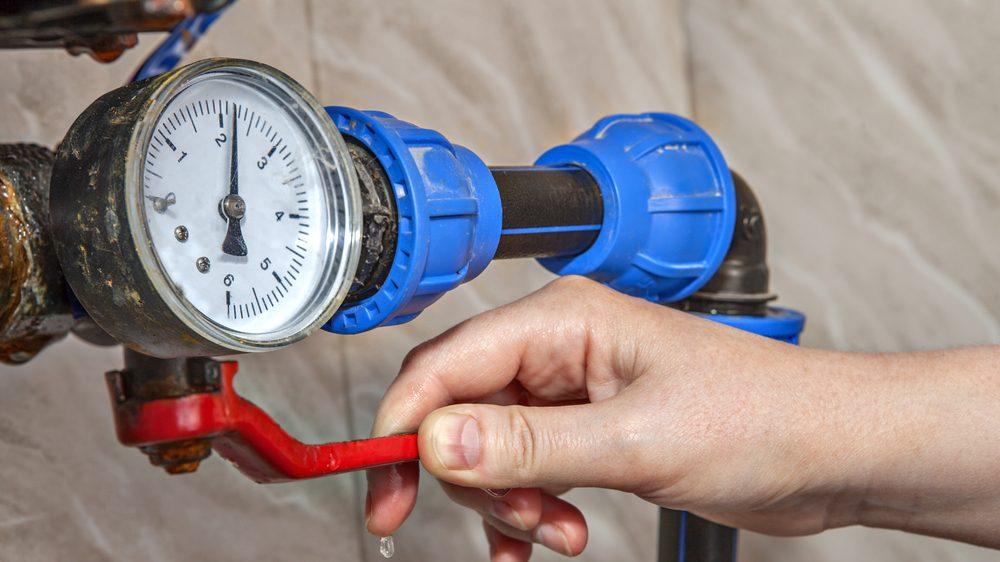
If an emergency strikes, follow this simple process when turning off the Main Water Circuit. First, locate and confirm your accuracy on the Main Water Valve using tips from our previous subheading. Once confirmed, twist or turn this valve clockwise (Righty-tighty!). This action cuts off the main water supply flowing into your home and prevents any potential flooding or leaks from escalating into full-blown plumbing nightmares.
This is a handy skill considering statistics from The Insurance Information Institute stating that water damage accounts for almost half of all property damage claims. It’s also a fact that homes older than 30 years are three times more likely to suffer a plumbing or drainage problem.
Locate and Operate the Water Valve
It’s essential to understand that not all water calamities require you to shut off the main water circuit. Sometimes, localised issues can be managed with more targeted shut-off methods using individual shutoff valves available on fixtures and appliances themselves (taps, washing machines, toilets). In such cases, next to each fixture or appliance, you will find a small, similarly functioning valve. Turning off this will stop the water flow only to that particular fixture or appliance.
Distinguishing Types of Shutoff Valves
To successfully shut off either the Main Water Valve or those attached to specific fixtures, it’s helpful to understand the types of shutoff valves. This knowledge helps you shut them off with confidence. The two common types you’ll encounter are: Ball Valves typically found in newer properties and Gate Valves majorly in older homes. While the former operates with a lever that you turn 90 degrees partner clockwise (easy-peasy), operating the latter might require full-scale rotations partner clockwise.
In fact, there’s yet another type: Plumbing codes worldwide also allow the use of Saddle Valves for low-volume applications such as ice makers or humidifiers. Learning how each type functions allows you to take charge when there’s water chaos instead of sinking into panic mode.
Procedure to Shut Main Water
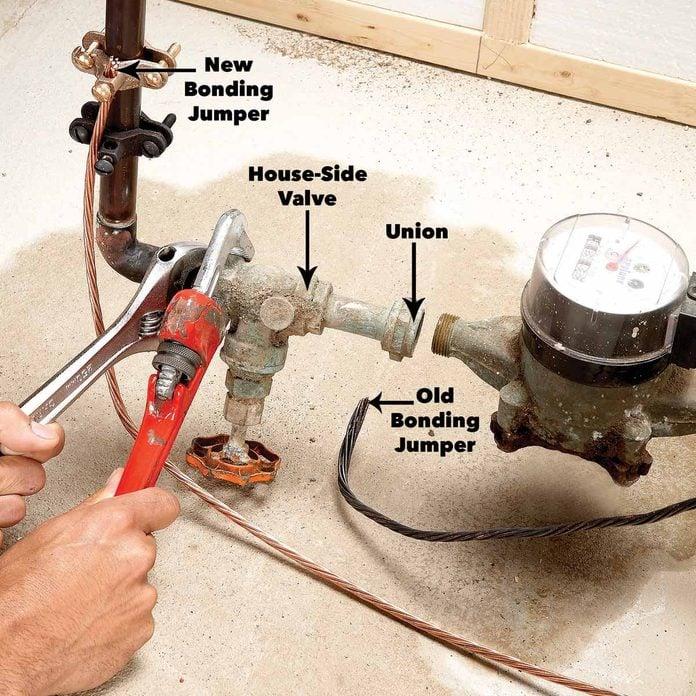
Bearing in mind all we’ve covered, it is now time to roll up your sleeves and practice shutting off your main water supply! If indeed there comes a day where your pipes burst (enticing as much as 200 gallons in a single day), you know just what step to take. Trained and ready!
Firstly, locate your Main Water Valve following our initial steps. Identify by sight and touch if necessary, then carefully turn it clockwise closely observing changes in water flow around the house. Now take stock if any leaks or bursts have slowed or stopped. This basic drill is your safety net during a plumbing emergency. Even minimal practice is a victory: when the actual situation arrives, you’re likely to respond efficiently and effectively!
Shutting off Water at Fixtures
If a particular fixture in your home is causing a watery mess, you have a simple option – turn off the water supply right at that fixture. Each fixture like sinks and toilets has an individual shutoff valve, often found underneath or behind the fixture. You can easily identify them as they are typically small oval-shaped knobs.
To stop the water supply, simply twist this knob clockwise. Remember the good ol’ plumber’s jargon – ‘righty tighty, lefty loosey’! Feel free to contact us at Dan’s Plumbing if you struggle to locate these valves or if they seem stuck.
Halting Water Supply via Meter
In cases where you need to shut off the entire water supply, you should head directly to your water meter. Australian households typically have their water meter located outside, often near the front boundary of their property. It can be in-ground or above-ground. The shutoff valve is usually situated next to the meter.
Get a spanner or shutoff tool and turn this valve clockwise until it is tight. Practice caution while doing this as excessive force can lead to dreaded damages and swiftly transform a small hassle into a substantial headache! If you require assistance, don’t hesitate to reach out to our eager team at Dan’s Plumbing.
Guide to Shutoff Valves
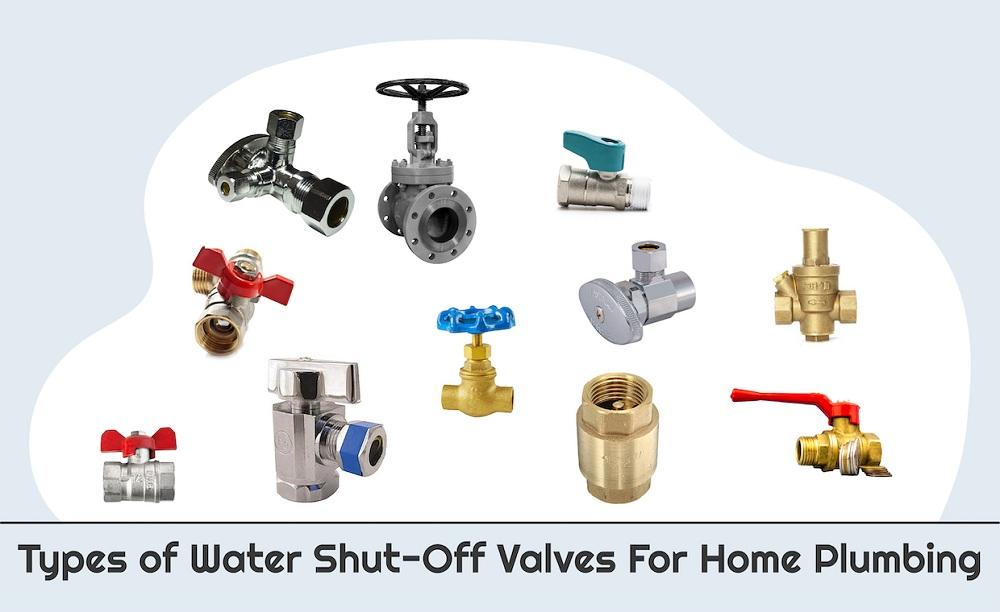
Understanding your home’s underlying plumbing system could be your lifesaver during emergencies! Most homes have two main types of shutoff valves – gate valves and ball valves. A gate valve is classic with its round wheel atop (which needs multiple turns to fully close). The ball variant, however, has a lever that needs just a 90-degree swivel for complete shut-off.
To ensure easy usability during dire situations, make it a habit to regularly check and maintain these valves. Sometimes these valves might get a bit too comfortable with inactivity and refuse to budge when needed. When unsure, it’s always safer to rely on our able-bodied professionals. Here is a useful guide by Bunnings detailing different plumbing fixtures and corresponding shut-off methods.
Shutting Down Water Heater Supply
This tidbit could be crucial for those chilly winter mornings when the bath seems like a polar plunge! The water heater in your house not only warms up your showers but also has a dedicated shut-off valve. For most Australian homes, this is usually located on the cold water line leading into the top of the heater.
Identify this valve and rotate it clockwise to turn off the supply. Remember, hot water can pose serious dangers, especially if there’s a leak or burst near your water heater. It’s better to be safe and shut it off until professional help arrives, such as ours at Dan’s Plumbing.
Tying it all together
Understanding how to control your water supply system can save you from potential disaster scenarios or at least lessen the damage significantly. Whether it’s halting at fixtures, using the meter shutoff, understanding shut-off valves or taming your water heater supply – knowledge and timely action are key! But don’t forget in all this do-it-yourself enthusiasm, some tasks are best left to us professionals – your friendly neighbourhood plumbers at Dan’s Plumbing!
- Can I Get a Plumber to Help Me Install An Under Sink Water Boiler in Our Office Kitchen? - September 14, 2024
- Can a Plumber Help Me Clear a Badly Clogged Toilet? - September 4, 2024
- Can a Plumber Help Me to Replace a Bathtub Drain Stopper? - August 29, 2024
Related posts:
 Can a Plumber Help Me If My Water Pressure Is Low? Or Might That Be a Council Water Supply Issue?
Can a Plumber Help Me If My Water Pressure Is Low? Or Might That Be a Council Water Supply Issue?
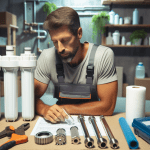 Can a Plumber Help Me Install a Whole House Water Filter?
Can a Plumber Help Me Install a Whole House Water Filter?
 How Do I Know If I Have a Water Heater Leak? Can Plumbers Do a Test?
How Do I Know If I Have a Water Heater Leak? Can Plumbers Do a Test?
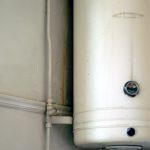 What Should I Do If My Hot Water Service Is Leaking? Is It Time For a Plumber to Replace The Whole System?
What Should I Do If My Hot Water Service Is Leaking? Is It Time For a Plumber to Replace The Whole System?
 How Do Plumbers Locate Hidden Water Leaks in Australian Homes?
How Do Plumbers Locate Hidden Water Leaks in Australian Homes?
 Can Your Plumbers Help Me Fix a Leaking Shower Diverter?
Can Your Plumbers Help Me Fix a Leaking Shower Diverter?

